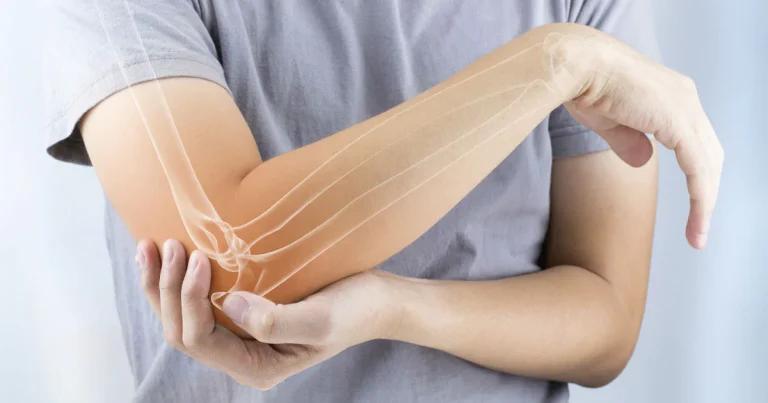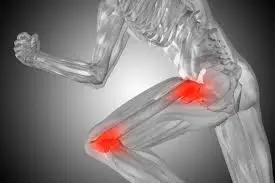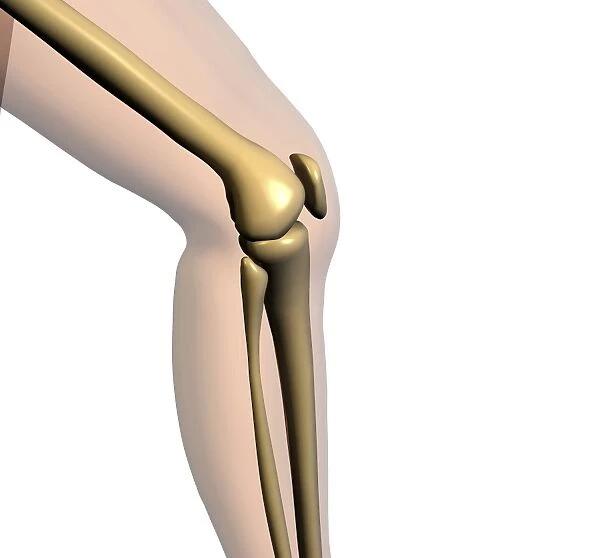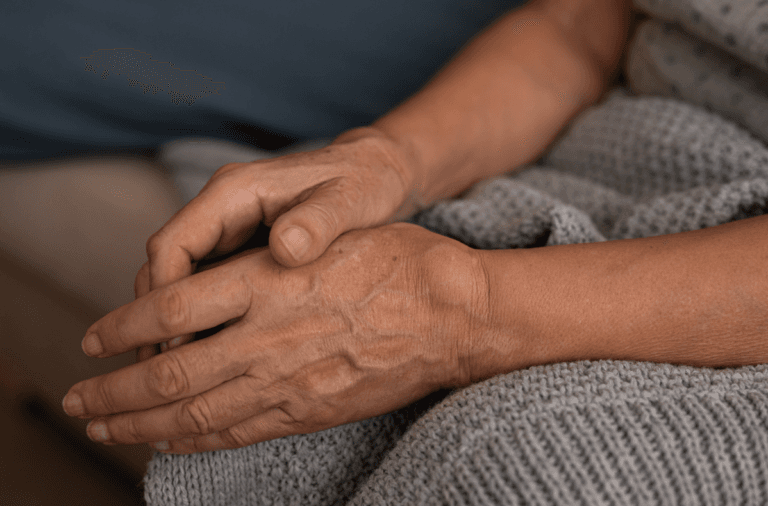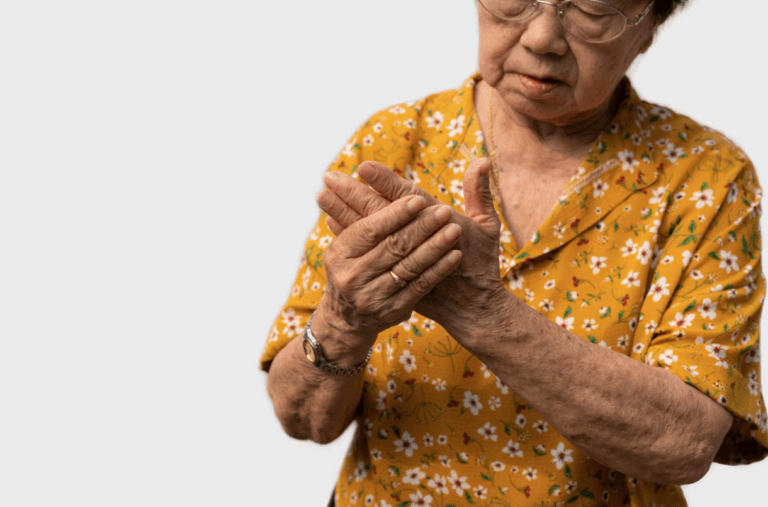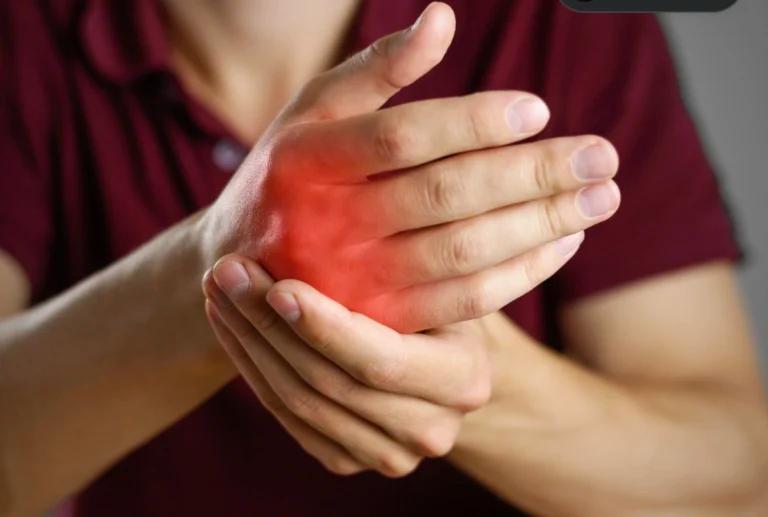Osteoarthritis
Get valuable insights into Osteoarthritis, including its causes, symptoms, prevention strategies, and treatment options, while also learning about how you can lower the cost of the medications used to treat Osteoarthritis.
MEDICAL INFORMATION
Osteoarthritis Key Facts
Related Medications
Osteoarthritis: Understanding the most common form of arthritis
Osteoarthritis, also known as OA, is a chronic degenerative joint disease that affects millions of people worldwide. It is the most common form of arthritis and primarily affects the hands, knees, hips, neck, and lower back. Unlike other types of arthritis, osteoarthritis specifically targets the joints, causing the breakdown of cartilage, leading to pain, stiffness, and limited movement. While there is no cure for osteoarthritis, there are various treatment options available to manage its symptoms and improve the quality of life for those affected.
What causes osteoarthritis?
Osteoarthritis occurs when the protective cartilage that cushions the ends of bones wears down over time. The exact cause of osteoarthritis remains unknown, but researchers believe it is a combination of factors involving both genetic and environmental influences. The risk of developing osteoarthritis increases with age, and certain risk factors make individuals more susceptible to the condition. These risk factors include:
- Aging: Osteoarthritis is more common in middle-aged and older adults, with symptoms often appearing after the age of 50
- Heredity: Some individuals may inherit genetic traits that predispose them to osteoarthritis
- Obesity: Excess weight places additional stress on the joints, particularly weight-bearing joints like the hips and knees
- Joint injuries: Previous joint injuries, such as fractures or ligament tears, can increase the likelihood of developing osteoarthritis later in life
- Overuse of joints: Repetitive movements or activities that place excessive stress on the joints can contribute to the development of osteoarthritis
- Joint misalignment: Structural abnormalities or joint deformities can lead to abnormal wear and tear on the joint surfaces
- Other medical conditions: Certain medical conditions, such as bleeding disorders or diseases that affect blood supply to the joints, can increase the risk of osteoarthritis
Understanding the symptoms of osteoarthritis
The symptoms of osteoarthritis can vary from person to person but commonly include joint pain, stiffness (especially after periods of inactivity), swelling, reduced range of motion, and a feeling of joint instability. These symptoms often worsen over time and can significantly impact daily activities and quality of life. Osteoarthritis manifests differently in each individual, and not everyone experiences pain. However, common symptoms associated with osteoarthritis include:
- Joint pain: Pain in the affected joint, especially after movement or activity, is a hallmark symptom of osteoarthritis
- Stiffness: Joint stiffness, particularly upon waking up or after periods of inactivity, is a common occurrence in osteoarthritis
- Swollen joints: Inflammation can cause swelling in and around the affected joint, leading to discomfort and limited mobility
- Reduced range of motion: Osteoarthritis can result in a decreased ability to move the joint through its full range of motion
- Joint instability: Some individuals may experience a sensation of joint looseness or instability due to the breakdown of cartilage
- Joint changes: As osteoarthritis progresses, individuals may notice changes in the appearance of the affected joint, such as bony enlargements or deformities
It is important to note that symptoms of osteoarthritis can vary in severity and may worsen over time. Seeking medical attention and early diagnosis can help manage the condition effectively.
Diagnosing osteoarthritis: What to expect
Diagnosing osteoarthritis typically involves a thorough evaluation by a healthcare provider, which may include:
- Medical history: The healthcare provider will inquire about your symptoms, their duration, and any previous injuries or conditions that may contribute to your joint pain
- Physical examination: The provider will physically examine the affected joint, assessing for tenderness, swelling, and range of motion
- Imaging tests: X-rays or other imaging techniques can reveal the extent of joint damage, such as loss of joint space, bone spurs, or cysts
- Lab tests: While there is no specific lab test to diagnose osteoarthritis, blood tests may be ordered to rule out other conditions that present with similar symptoms, such as rheumatoid arthritis or gout
Once a diagnosis is confirmed, your healthcare provider will work with you to develop a personalized treatment plan to alleviate symptoms and improve joint function.
Treatment options for osteoarthritis
Although there is no cure for osteoarthritis, various osteoarthritis treatment options can effectively manage symptoms and improve the overall quality of life for individuals with the condition. The primary goals of treatment are to reduce joint pain, increase joint mobility, and slow down the progression of the disease. Treatment options for osteoarthritis include:
Medications
- Over-the-counter pain relievers: One of the most common types of medication used for osteoarthritis is over-the-counter (OTC) pain relievers. These medications, such as acetaminophen (Tylenol) and nonsteroidal anti-inflammatory drugs (NSAIDs) like ibuprofen and naproxen, can help reduce pain and inflammation associated with osteoarthritis. OTC pain relievers are readily available and can be an initial option for managing mild to moderate osteoarthritis symptoms
- Prescription medications: In cases where OTC pain relievers are insufficient, healthcare providers may prescribe stronger medications to manage osteoarthritis symptoms. These prescription medications may include higher doses of NSAIDs, opioids for severe pain, or topical creams and gels that provide localized relief. It’s important to work closely with a healthcare provider to determine the most appropriate prescription medication based on individual needs and considerations
- Injections for joint pain: In some instances, injections may be recommended to alleviate joint pain caused by osteoarthritis. Corticosteroid injections can provide short-term relief by reducing inflammation and swelling in the affected joint. These injections are typically administered by a healthcare professional and can provide significant pain relief for several weeks or months.
- Another type of injection used for osteoarthritis is hyaluronic acid. This substance mimics the natural joint fluid and helps lubricate the joint, reducing friction and pain. Hyaluronic acid injections are typically administered over a series of sessions and can provide longer-lasting relief for individuals with osteoarthritis
- Disease-modifying anti-rheumatic drugs (DMARDs): While DMARDs are commonly used to treat inflammatory arthritis conditions, such as rheumatoid arthritis, they may also have a role in managing osteoarthritis. These medications work by targeting the underlying disease process and may help slow down the progression of joint damage in some individuals with osteoarthritis. DMARDs are typically prescribed by a rheumatologist and require close monitoring for potential side effects
Dietary supplements
In addition to conventional medications, some individuals turn to dietary supplements as a complementary approach to managing osteoarthritis symptoms. Glucosamine and chondroitin sulfate are commonly used supplements that may help improve joint health and reduce pain. While scientific evidence supporting their efficacy is mixed, some individuals report positive effects with these supplements. It’s essential to discuss the use of dietary supplements with a healthcare provider to ensure they are safe and appropriate for individual circumstances.
Lifestyle modifications
Medication is just one component of a comprehensive treatment plan for osteoarthritis. It is often most effective when combined with other strategies. Adopting certain lifestyle changes can significantly improve your overall joint health and help manage osteoarthritis symptoms. Consider incorporating the following into your daily routine.
Maintain a healthy weight
Maintaining a healthy body weight or losing excess weight can significantly reduce stress on weight-bearing joints. Excess weight places additional stress on the joints, particularly weight-bearing joints like the hips and knees. Weight loss, if necessary, can lessen the strain on these joints and alleviate pain.
Physical therapy
Engage in regular exercise: Regular physical activity, such as walking, swimming, water aerobics, or cycling, can strengthen the muscles around the joints, improve joint flexibility, and promote overall joint health. Consult with a healthcare professional or physical therapist to develop an exercise plan suitable for your condition. A physical therapist can design an exercise program tailored to your specific needs, focusing on improving joint strength, flexibility, and stability. Manual therapy techniques, such as joint mobilization or soft tissue manipulation, may also be utilized to alleviate pain and restore joint function. Adequate rest is essential for joint health and overall well-being. Ensure you balance physical activity with periods of rest to prevent overexertion and reduce joint pain.
Assistive devices
Avoid activities that place excessive strain on your joints, and practice proper body mechanics when performing daily tasks to help prevent further joint damage. Use assistive devices, such as ergonomic tools or joint-friendly equipment, to reduce joint stress. Braces or splints can provide support and stability to weakened joints, reducing pain and preventing further damage. Canes or walkers can help redistribute weight away from affected joints, improving mobility and reducing strain.
Complementary therapies
- Apply heat or cold therapy: Depending on your symptoms, applying heat or cold to the affected joint can help reduce pain and stiffness. Heat can help relax muscles and improve blood circulation, while cold can numb the area and reduce inflammation
- Acupuncture: This ancient Chinese practice involves the insertion of thin needles at specific points on the body to alleviate pain and promote healing. Some individuals find acupuncture helpful in managing osteoarthritis symptoms
- Consider complementary therapies: Complementary therapies, such as massage therapy or mindfulness techniques, can help alleviate stress, reduce pain, and promote relaxation. Explore different options to find what works best for you
Surgical interventions
In severe cases where conservative treatments have failed to provide sufficient relief, surgical options may be considered. These can include joint repair, joint replacement, or joint fusion, depending on the extent of joint damage and individual circumstances
Conclusion
Osteoarthritis is a chronic condition that affects the joints and can significantly impact quality of life. Managing osteoarthritis is a lifelong journey, and it requires proactive self-care and regular communication with your healthcare provider to determine the most suitable treatment approach based on your specific symptoms and needs.
While there is no cure, medication plays a vital role in managing the symptoms associated with osteoarthritis. Over-the-counter pain relievers, prescription medications, injections, and dietary supplements can all provide relief and improve joint function. By adopting a comprehensive approach that combines medical treatments, lifestyle modifications, and self-management strategies, you can effectively manage your symptoms and maintain an active, fulfilling life.
Sources
- Osteoarthritis – Symptoms & causes – Mayo Clinic
- Osteoarthritis: Symptoms, Causes & Treatment Options
- Osteoarthritis (OA) – Causes, symptoms, treatments
- Osteoarthritis: MedlinePlus Medical Encyclopedia
- Osteoarthritis – Johns Hopkins Medicine
- Osteoarthritis – OA | MedlinePlus
Medical Disclaimer
NowPatient has taken all reasonable steps to ensure that all material is factually accurate, complete, and current. However, the knowledge and experience of a qualified healthcare professional should always be sought after instead of using the information on this page. Before taking any drug, you should always speak to your doctor or another qualified healthcare provider.
The information provided here about medications is subject to change and is not meant to include all uses, precautions, warnings, directions, drug interactions, allergic reactions, or negative effects. The absence of warnings or other information for a particular medication does not imply that the medication or medication combination is appropriate for all patients or for all possible purposes.




